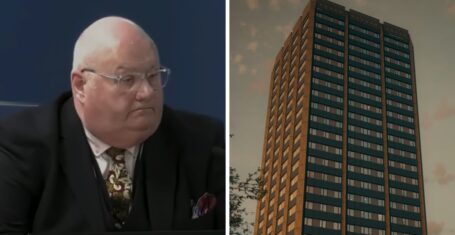
Here’s exactly what the 2025 Met Gala’s Superfine: Tailoring Black Style theme means
The theme hopes to thrust black dandyism back into the international spotlight
The Met Gala 2025 is here, and this year its theme is Superfine: Tailoring Black Style.
The theme of the gala is based around the Costume Institute’s new exhibit in New York’s Metropolitan Museum of Art, and will have a heavy focus on Black fashion and menswear.
It follows on from last year’s Sleeping Beauties: Reawakening Fashion, and includes Lewis Hamilton as one of the co-chairs.
The dress code is more loosely termed “Tailored for You” which references the strong tailoring and male-centred fashion shown in this year’s exhibit.
Moreover, this year’s theme is far removed from previous ones we’ve seen as it’s the first time in two decades that a Met Gala theme has been focused on menswear.
It is inspired by Monica L Miller’s book Slaves to Fashion: Black Dandyism and the Styling of Black Diasporic Identity, which was published in 2009.
“The theme this year is not only timely,” said Met Gala committee member Usher, “but also speaks to our rich culture that should always be widely celebrated.”
The Met has also spoken out about the theme, saying the exhibit “presents a cultural and historical examination of Black style from the 18th century to today, through the lens of dandyism.”
However, many are unsure exactly what black dandyism is.
What is dandyism?
According to Vogue, dandyism is used to describe an aristocratic style, most famously worn by Beau Brummell, whose motto was: “Don’t talk about your clothes, let your clothes do the talking.”
Beau was known for rejecting the previous flamboyance shown by the aristocracy and instead favoured understated and sharp tailoring.
This type of fashion and expression was seen as a rejection of social norms, and acted as a rebellion which can be seen via black dandyism today.
Most Read
Regarding black dandyism, Vogue says: “Black dandyism has always been about more than aesthetics. It has been about identity, power, and resistance.
“In a world where Black people have been marginalised, the dandy became a figure who defied the rigid categories of race and class that sought to confine them.”
How has black dandyism evolved?
Black dandyism begun in the Renaissance period through the melding of European and Black cultures. However, it wasn’t until the Harlem Renaissance that the world truly saw the power of this form of fashion and being.
During the Harlem Renaissance, and in the 1920s as a whole, there was a cultural revolution taking place in the world of fashion.
Vogue explains that black dandyism was also not just a form of resistance but a necessity for Black people to fit into a White America in the 1900s: “Just as dandyism had once represented defiance against the traditional aristocracy, it now became a way to reject the limitations placed on Black people in America.
“The sharp suit, the polished shoes, the bow tie—these were not just fashion choices; they were ways of asserting one’s right to exist on their own terms.”
However, as we move into the 2000s, black dandyism has continued to have a stronghold in art and fashion.
Designers such as Olivier Rousteing and Thom Browne often use facets of black dandyism in their work, whether that be through opulent designs or precise tailoring. Both are things we will for sure see this evening, during a night of celebration for Black culture and fashion.
The 2025 Met Gala theme truly has the chance to be revolutionary whilst celebrating the strength and resilience of the Black community.
Featured image via Dapper Dan and Wisdom Kaye on Instagram






















